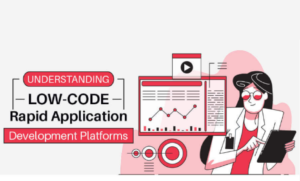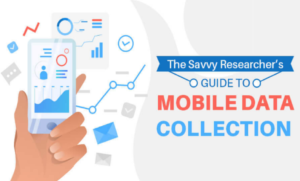
Psssst – Have you heard about the Low Code – No Code Phenomenon
Psssst – Have you heard about the Low Code – No Code Phenomenon Maybe you


Low Code and No Code platforms have been gaining significant traction and airtime recently especially with the necessity for remote working in the new normal world in which we now live.
This remote working paradigm has also forced many organisations to look at how they deliver their business solutions and develop new ways in which their workforce can access and consume the information needed to make decisions on a daily basis.
These platforms enable users to rapidly design, build, customise, and deploy business apps for web and mobile with little to no coding up to 10 times faster than conventional methods. They provide a visual development approach to Rapid Application Development (RAD) and are aimed at Citizen Developers i.e. non-developers and existing internal resources who take it upon themselves to optimise processes by creating apps.
These tools have become powerful options for any organisation undergoing digital transformation and can help them to become more agile. They simplify and streamline app development processes, thereby saving time, money and resources. This extra speed boosts productivity and allows organisations to innovate faster without having to employ expensive external consultants, thereby reducing backlogs and freeing up busy IT teams.
This speed of development also has many advantages as the business can now deliver solutions to their workforce much faster through rapid prototyping and speedier feedback. This reduces the time of the app development process and allows for greater productivity with fewer people.
There are normally 4 phases within a rapid development lifecycle
The various stakeholders within the business come together to discuss and agree on the business needs, project scope, constraints and application requirements. A project scope document should then be drawn up which will be used to manage and ultimately measure that the objectives have been met at the end of the project.
User feedback is collected and is used to help determine the solution architecture and to create the initial modelling and prototypes. This stage is repeated as often as necessary until approval is reached on a working model of the system that meets the pre-stated needs outlined in the scope document.
This phase consists of the application development, building out the modules, the presentation layer with field requirements, process flows, any coding necessary (if a low code platform is being used), testing, and integration. Users may continue to suggest changes or improvements throughout the construction and feedback stages but all these changes should be documented and the scope document updated as needed. This stage is repeated when new features are required or if modifications are made to meet the needs of the project.
Once the final release has been revised and tested and approval for release has been given by the project sponsor the application can now go live. The project team can now move the application to the live production environment for final testing and team training.
The experts like Forrester Research and Gartner have also validated these tools and have made significant predictions on how they will impact the market in the coming years. The total market for low-code development platforms will hit $21.2 billion by 2022. (Source: Forrester) and Low-code application development will account for 65% of all application development activity by 2024. (Source: Gartner)
“Hand-coding is too slow to develop and deliver many of the applications that companies use to win, serve, and retain customers. Some firms are turning to new, “low-code and no-code” application platforms that accelerate app delivery by dramatically reducing the amount of hand-coding required. Faster delivery is the primary benefit of these application platforms; they also help firms respond more quickly to customer feedback after initial software releases and provision mobile and multichannel apps.”
“Enterprise low-code application platforms offer compelling productivity gains for professional and citizen development, as well as speed-of-delivery benefits.”
ERS IT Solutions have been developing robust software applications for over 20 years and have an impeccable reputation for delivering successful projects on time and on budget. Our newly released Team Konnect Enterprise rapid application development platform is one of the new generation of NO-CODE platforms that enables businesses to create business applications for both web and mobile platforms in days instead of months all without the need for writing any code.
Why not contact us today for a demonstration and see how Team Konnect Enterprise can dramatically increase the successful delivery of your software development projects.
To learn more about how your business can benefit from our Team Konnect Rapid Application Development Platform contact us by email @ demo@teamkonnect.com for a demonstration or call +3531-8859500 and ask for a member of the Team Konnect team.

Psssst – Have you heard about the Low Code – No Code Phenomenon Maybe you

No Code Platform Considerations As our business environments become ever more complex and peoples time

Overview Software applications are essential instruments for every modern business today. Companies rely on software

Low code rapid application development platforms are really gaining traction in the market today. With

Scan across the globe today and you will find millions of different business processes in

Data collection is required across every facet of life today within almost every business in
00-3531-8859500
01-8859500
00-3531-8859501
Unit 5, Block 8, Blanchardstown Corporate Park Dublin 15, D15 V240, Ireland
© 2021 TeamKonnect. All rights reserved